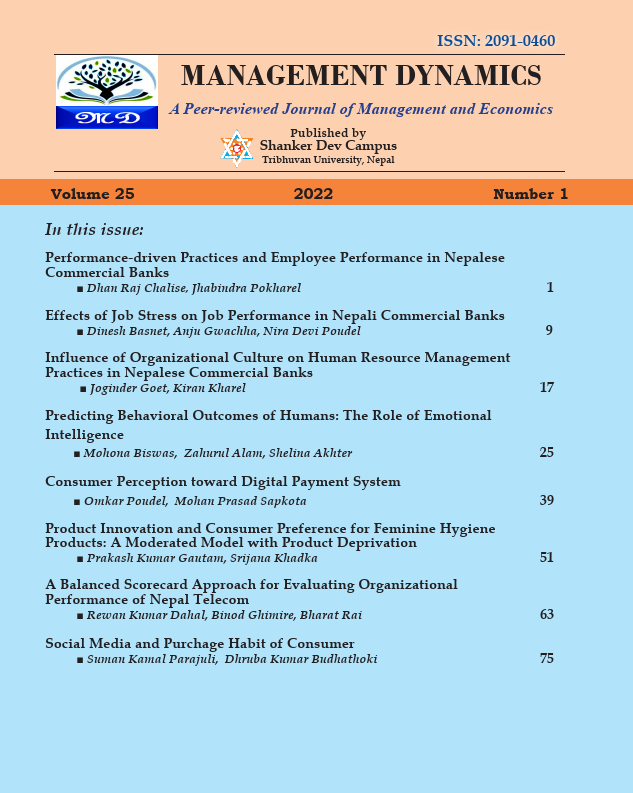Influence of Organizational Culture on Human Resource Management Practices in Nepalese Commercial Banks
DOI:
https://doi.org/10.3126/md.v25i1.53281Keywords:
Human resource management, Power distance, Collectivism, Masculinity, Uncertainty avoidance, Long-term orientationAbstract
This study examines the relationship between organizational culture and human resource management in Nepalese commercial banks. This study aims to analyze the impact of specific factors on Nepalese commercial banks' human resource management practices. To estimate the relationship between human resource management, and the organizational cultural dimensions, the study used a descriptive and causal-comparative research design. The study relies on primary data derived from a self-administered questionnaire. In total, 24 commercial banks were chosen for the study, 410 questionnaires were distributed and 390 questionnaires were collected for the analysis. To achieve the study's goal, a structured questionnaire was constructed. The findings show there was a significant positive relationship between power distance (PD), collectivism (CO), masculinity (MA), uncertainty avoidance (UA), and long-term orientation (LTO) with human resource management (HRM). The result further revealed that Power distance (PD), collectivism (CO), masculinity (MA), and uncertainty avoidance (UA) have a significant positive impact on human resource management (HRM), and long-term orientation (LTO) do not have any influence on human resource management (HRM). The findings of this study can be implemented for better management of the human resources of Nepalese commercial banks.
Downloads
Downloads
Published
How to Cite
Issue
Section
License
Copyright © Research Management Cell, Shanker Dev Campus

